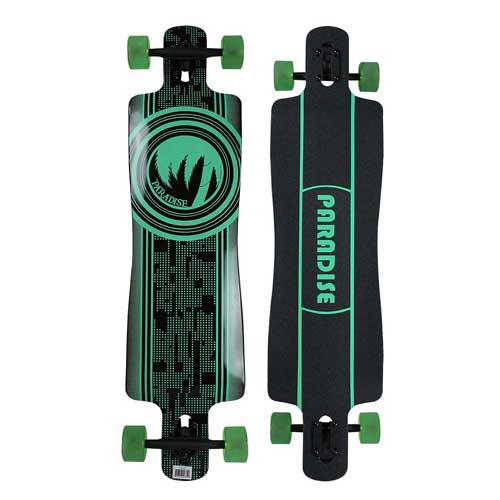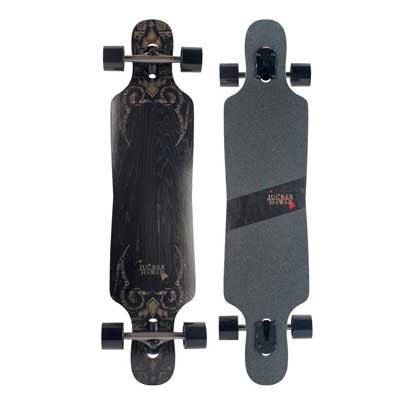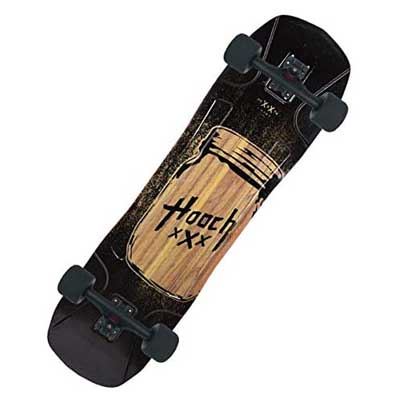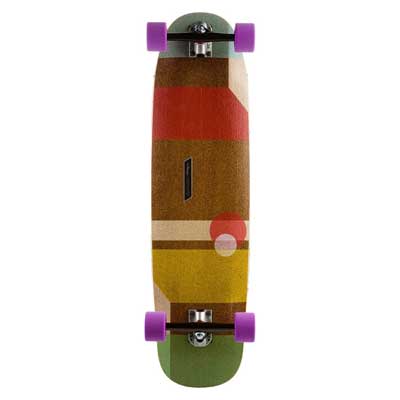Freeride Longboarding involves skating downhill, regulating the speed with drifts and slides, which are a staple of Freeriding.
Freeride is not as aggressive or fast as Downhill Longboarding, where the goal is to ride the hill as fast as possible.
Drifts and slides control the skater’s speed, slowing them down or even bringing them to a complete halt (if they want to)
Drifting and Sliding are very satisfying to the skater, are excellent for navigating bends and corners while looking impressive.
What’s A Slide?
While turning, The Longboarder pushes the leg down and out, which sends the deck sideways and causes the wheels to ‘slide’ slowing the rider down in the process.
The rider can then straighten up the board and keep rolling downhill. Freestylers navigate hills by performing many turns, slides and drifts.
Riders can execute the slide and push hard to stop completely, similar to how Snowboarders stop.
Slides can be performed standing up (standing slide) or touching the road (Coleman slide), requiring sliding gloves.
What’s Drifting?
Drifting is a controlled manoeuvre where the bodyweights are positioned between a ‘turn’ and a ‘slide’.
More aggressive than a standard turn, mellower than a slide and a very effective move to tackle bends and corners and control your speed.
Freeride Longboard Characteristics
Longboarders can perform freeriding drifts and slides on most decks. However, some Longboards lend themselves better to freeriding.
Dropdown decks are highly stable as they are close to the ground with a low centre of gravity, the best decks to start freeriding with and to get a feel for Sliding.
Top-mounted decks are less stable but can be pushed harder and provide more grip and tighter turns, making them a better option for the more advanced free-rider.
Drop through longboards are the best of both worlds. They sit at middle height, providing a reasonable degree of slide execution and stability, a good choice for intermediate riders.
The best Freeride decks are symmetrical to allow for turning both ways.
Kicktails are unnecessary unless you want to combine freestyle tricks with freeride Sliding.
Freeride decks should be pretty stiff with minimal flex. A more rigid deck is more efficient at executing slides.
Choose a deck with a deep concave (downward curve between the rails), and a good amount of rocker (downward angle between nose and tail) as these will keep your feet secure and provide stability during Sliding.
Standard Trucks of 180mm work for beginners and intermediates as they are more stable than narrower trucks often used by advanced riders.
Narrower trucks are less stable but provide more responsive and sharper turning.
Slides are easier to perform on harder wheels (90A) which grip the tarmac less and slide longer. Control is essential when using harder wheels which are better suited to the more experienced free-rider.
Softer wheels of between 80-85A provide more grip, controlled Sliding and faster stopping, so a safer option for those new to Freeriding.
Bodyweight will help determine the best wheel for you. Heavier riders will get a good grip from harder wheels, while lighter riders will get a good slide on softer wheels.
Freeriders use rounded edge wheels, which are easier to slide on. Rank beginners may use flat-edged wheels, which provide more grip to start with.
As you progress in Freeriding, you’ll determine the best wheel hardness for you.
A good grip is essential for Sliding, so the deck needs to be covered in aggressive grip tape to keep the feet firmly planted to the deck.
Freeride Longboards For Beginners
The following Dropdown Longboards are incredibly stable and suitable for those starting in freeride longboarding.
Osprey Cube

The Osprey cube is a symmetrical twin tipped dropdown deck with softish 50mm 82A wheels, which are a flat edge, not the best wheels for sliding but provide more grip.
Once you have had some practice, you can upgrade to rounded wheels.
The deck measures 41.25″ is stiff and stable, constructed from 9-ply maple with a comfortable concave, foot placements and ‘cube’ design grip tape.
Yocaher Pro Speed Dropdown
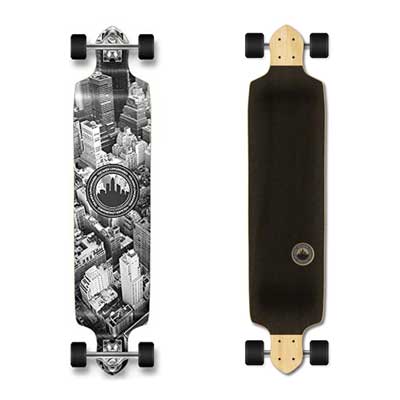
The Yocaher Pro Speed Dropdown is designed first and foremost to remain stable at speeds.
However, the dropdown design coupled with 180mm heavy-duty trucks and soft 70mm x 52mm 78a hardness makes for an excellent deck to learn freeride sliding on.
The deck is a 9-ply maple construction measuring 41.25″ x 9″ with concave and 80A grip tape and a 33″ wheelbase.

